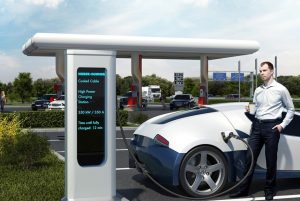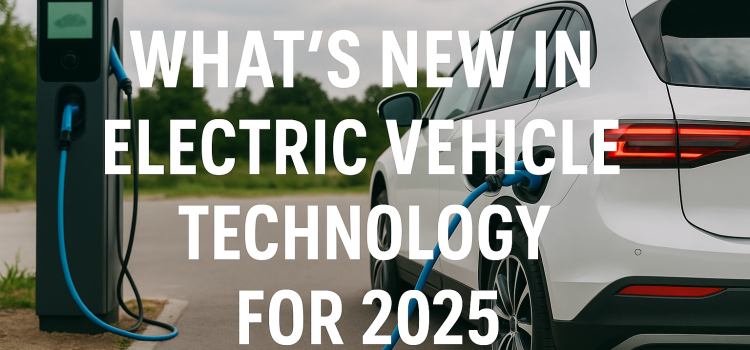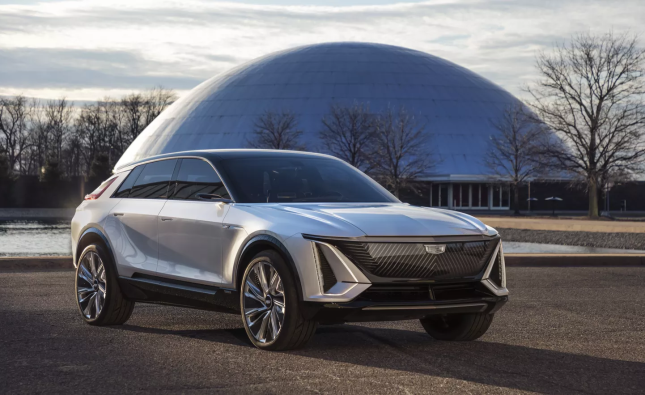
Introduction
Electric cars once felt like a brave experiment. Today they feel like the future on fast-forward, and 2025 looks set to be the tipping point. Carmakers, battery giants, and clean-energy start-ups spent the last three years racing to turn lab demos into showroom gear. The result? Big leaps in range, charging speed, and grid smarts—all arriving in the same model year.
Whether you already drive a plug-in or you still watch from the sidelines, this guide breaks down the bold electric vehicle technology 2025 innovations you will see on dealer lots and highway chargers before the year ends. We will keep the words clear, the jargon light, and the outlook realistic so you can plan your next move with confidence.
Classic lithium-ion packs hold liquid electrolytes that limit energy density and raise fire risk. Solid-state designs swap that liquid for a ceramic or polymer layer, squeezing more ions in less space and stopping thermal run-off.
- 30 percent more range in the same pack size.
- Faster charging because solid electrolytes handle higher currents without damage.
- Longer life—up to 1 000 000 km before capacity drops below 80 percent.
Real-world launch: Toyota’s midsize crossover claims 600 miles EPA on one charge while keeping pack weight under 500 kg.
Ultra-Fast Charging Hits 350 kW and Beyond

Ten-minute top-ups move from concept charts to highway rest stops thanks to new silicon-anode cells and thicker copper busbars. Networks in Europe and North America roll out 400-kW liquid-cooled stalls that keep cables slim. Cars talk to stations over ISO 15118, fine-tuning current in microseconds to protect cell health.
| Charger Class | Power (kW) | 300-mile Refill Time | Main Use Case |
|---|---|---|---|
| DC Gen 1 | 50 kW | 60 min | City errands |
| DC Gen 2 | 150 kW | 25 min | Supermarket stop |
| DC Gen 3 | 350 kW | 10 min | Highway travel |
| DC Gen 4 Pilot | 500 kW | 6 min | Fleet depots |
Bidirectional Charging Grows Up
Early vehicle-to-home tests proved that an EV could run a fridge during storms. In 2025, bold bidirectional charging becomes a factory option from Ford, Hyundai, and Renault. Owners can sell surplus power back at peak grid prices or keep solar energy stored for night use.
Key numbers:
- In California, daytime sell-back can shave $800 a year off bills.
Wireless Charging Pads Leave Cords Behind
New cars ship with an under-body coil that pairs with driveway pads. Alignment cameras guide drivers to within two inches of center, then 50-kW pads begin charging—enough for home overnight needs. Taxi pilots test 100-kW pads at city ranks to top up during passenger swaps.
Pro tip: Pad efficiency drops if snow piles up; heated covers now melt frost automatically.
Cheaper Motors With Rare-Earth Free Designs

2025 sees production bold rare-earth free motors using ferrite magnets and new coil shapes. They weigh slightly more but cut material costs, letting entry EVs dip below $25 000 before credits.
Battery Recycling Turns Waste Into Supply
Several 2025 models will carry cells made with 20 percent recycled lithium, nickel, and cobalt. Direct-to-cathode recycling skips melting and uses less energy. Policy in the EU now mandates 16 percent recycled cobalt in each pack, nudging the entire chain toward closed loops.
H2: Improved Thermal Systems Boost Winter Range
Heat pumps in early EVs saved energy in cool air but struggled below −10 °C. New CO₂ refrigerant loops maintain 90 percent efficiency down to −25 °C. Paired with aerogel cabin liners, 2025 cars lose far less heat while preconditioning faster from phone apps.
Software-Defined Vehicles and Over-the-Air Upgrades
Most 2025 models ship with bold software-defined vehicle architecture. Buyers can unlock paid features—extra torque, hands-free lane change—after delivery. While some drivers dislike paywalls, the upside is longer feature life: range maps, charger filters, and even battery chemistry tweaks download in minutes without service visits.
Smarter Route Planning Saves Time and Kilowatts
AI planners now factor wind, grade, and charger crowd data. Tesla’s NaviGen 2, Rivian’s Pathfinder, and Google’s EV Maps all reroute in real time if queues build. Tests show 12-percent drop in trip time on holiday weekends.
City Infrastructure Goes Green Too

- Low-carbon cement parking decks drop embodied emissions 30 percent.
- Solar-roof charge hubs pair canopies with 1 MWh battery banks; surplus feeds nearby shops.
- Smart curb meters reserve spots for EVs at night, freeing daytime slots for loading vans.
Buying Tips for 2025 Shoppers
- Check charge curve, not just peak kW. A flat 200-kW line can beat a 350-kW spike that falls off quickly.
- Verify battery warranty—look for 70 percent capacity over 10 years.
- Ask about bidirectional support; not all models enable it at launch.
- Plan home upgrades early; 19.2-kW AC stations may need panel work.
- Compare software fees so you are not surprised by extra monthly costs.
The Road Ahead—Beyond 2025
Research labs eye lithium-sulfur cells with 800-Wh/kg energy, sodium-ion packs for budget cars, and hydrogen-to-electric range extenders for trucks. By 2027, some expect EVs to outsell gas cars in Europe and China. Policy support plus tech gains make that target less dream, more deadline.
Sustainable Materials and Manufacturing

Sustainability is a key focus in EV innovations 2025. For instance, BMW’s Neue Klasse platform, set to debut in 2025, emphasizes the use of sustainable materials and efficient manufacturing techniques to lower carbon emissions
Fast-Charging Infrastructure
For example, CATL’s enhanced Shenxing battery delivers an impressive 520 km (323 miles) of range after just five minutes of charging, maintaining high performance even at low temperatures .
Conclusion
From solid-state batteries to ultra-fast charging, 2025 brings the biggest leap for electric cars since the first Leaf rolled out. New packs stretch range, quick chargers slash wait, and bidirectional charging turns your driveway ride into a home power plant. Software-defined upgrades keep features fresh, while rare-earth free motors and strong recycling close resource loops. If you plan to switch or upgrade, watch charge curves, warranty terms, and grid-ready extras. The EV age is here, cleaner and quicker than ever.









